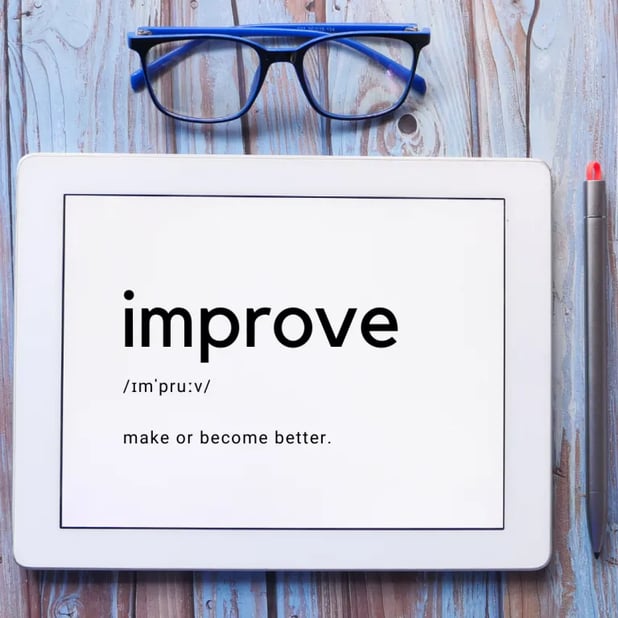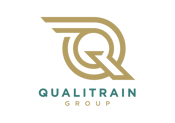Understanding the Need for Continuous Improvement
Continuous Improvement
Thanks for spending a little time to join me again in my monthly musing. This month we’ll have a quick look at the need for continuous improvement and try to clear up a few potential misconceptions.
I suppose this is obvious right? Then why do so many people and companies fail to grasp the real reasons as to why we need it? Even more of them give up before they have realised what it can really do for them, their company and their customers. Yes, I think most of us have heard the anecdotes which claim that a large percentage of people fail to develop a continuous improvement culture. Nevertheless, in our experience, we can assure you that everyone that sticks at it, absolutely succeeds in the long run. We’re not here today to argue or hypothesise on the root causes of this but it might help to remind ourselves what we’re really trying to do.
Lean
Those of us who feel more comfortable using Lean thinking and practice are just trying to reduce lead time, whilst developing themselves and their people at the same time by having management practices and operating systems that provide the opportunity for us to do this. “We do this by reducing waste!” absolutely correct, but there’s a really easy, practical way to get started. No big fan fare needed.
Identify the speed of your customer demand, (also known as Takt time) then go to the real place where work is done and observe. Ask yourself one question: “what is stopping the work from moving at the same speed as Takt time?”
It will soon become very clear which problem to work on next and those problems will almost always be waste. The Lean tools facilitate problem solving and improvement. Therefore, for each problem you uncover you’ll have the perfect opportunity to learn how to use the right tool at the right time, simultaneously learning and reducing lead time. Voila! Two birds with one stone.
Six Sigma

Then there are those who feel more comfortable with the Six Sigma approach, which after over 40 years can still be a divisive subject at times. I have to agree it wouldn’t even exist if we’d stuck to the work of Shewhart, Juran, Deming and more recently Don Wheeler, but that’s the brand that we’ve all become accustomed to so who am I to argue? In simple terms, Six Sigma is just basic physics, inputs go into a process which give us outputs for our customers. With Six Sigma we want to develop world class problem solvers who can use the method to stabilise, then optimise any process. A colleague of mine Paul makes this subject seem really simple.
First identify the type of variation that your output is suffering from. This is known as signal or noise, (otherwise known as mean and variation). Then just identify the inputs that need to be controlled and do it!
If you have stable inputs you’ll end up with stable outputs. You see… basic physics.
Kaizen vs Kairyo
Of course, there are other improvement methods out there and sure as a sunrise some clever consultant will find a way of putting old wine in a new bottle and charging £1,000’s a day for the privilege. Despite that I think it’s only fair to say that nearly all of us know that improvement is really all about people so it might help to share something I’ve learned that help me understand this more clearly.
Continuous improvement is more synonymous with Kaizen but a more accurate description would be Kairyo. I have learned that Kaizen is more about self-improvement. It’s as much a personal commitment to improve as it is the established process. It’s it’s easy to see how things were lost in translation.
Whether it’s you personally, your customers, or your company, the need for improvement is stronger now than it’s ever been. Nowadays more customers want much more, much faster. We’re fickle too; not giving much thought to switching to another supplier in the pursuit of saving a bob or two. If your processes don’t provide value very quickly, you’ll soon find yourself in trouble.
External Factors
For organisations there’s the ever-increasing risks from the external environment. We’ve certainly seen that over the last 18 months. Art Byrne summed it up best – he’s someone we can all learn a great deal from. If you see improvement (Lean) as a strategic weapon, you’ll be faster, more adaptable and more resilient. You’ll be able to cope with significant change much easier and you may even become a disruptor within your own organisation. The irony of modern times is that we’re striving to protect the environment but our economic models are still driven by GDP growth. The ever-lasting pursuit of more. Until this changes, I can’t see a better way of providing growth opportunities for your people through the power of Lean.
Finally, on a personal level, being competent in the practice of continuous improvement not only provides you with the opportunity to grow as a person and rise through the ranks of a growing business, but it also provides emotional stability. Mental health seems to be a hot topic at the moment. Please forgive me if I come across lacking empathy, in my defence this is something I have witnessed first hand for over 35 years supporting my Mum and I still struggle to keep my temper when faced with virtue signalling in pursuit of one’s own moral correctness. However, practicing improvement gives you the tools to deal with most situations at work, resulting in less anxiety because you know what to do and how to do it, making life that little bit easier.
The practice of self-reflection (known as Hansei) also helps keep you grounded and humble, leading to further Kaizen, helping you to build competence and confidence. Now, more than ever, we could all do with a little Kaizen.
Until next time…
Leon
Share this
You May Also Like
These Related Stories

Lean Six Sigma Black Belt Vacancy

New Appointment: Digital Marketing Executive


No Comments Yet
Let us know what you think